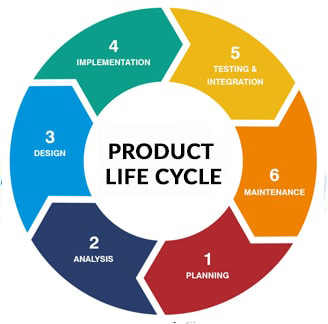Product Life Cycle
What is Product Life Cycle?
Definition:
The Product Life Cycle (PLC) refers to the stages a product goes through from its introduction to the market until its decline or withdrawal. It encompasses the entire lifespan of a product, including its development, launch, growth, maturity, and eventual decline. Understanding the product life cycle is crucial for businesses to make informed decisions regarding marketing strategies, resource allocation, and product evolution.
Analogy:
Imagine the product life cycle as the journey of a seed growing into a tree. From the initial planting (product development) to the growth of branches and leaves (market growth), reaching maturity with full bloom (market maturity), and eventually shedding leaves and declining (product decline), each stage signifies a phase in the life cycle with specific characteristics and challenges.
Further Description:
The Product Life Cycle comprises several key stages:
Introduction: This is the stage where a new product is launched into the market. The focus is on building awareness, and sales typically start slowly. Marketing efforts are geared towards educating consumers about the product’s benefits.
Growth: In the growth stage, the product gains acceptance, and sales start to increase. Competitors may enter the market, leading to enhanced marketing and distribution efforts. Profits rise, and the product gains wider market recognition.
Maturity: The maturity stage is characterized by stable sales and market saturation. Competition intensifies, leading to price stabilization and potential product modifications. Marketing focuses on product differentiation and maintaining customer loyalty.
Decline: Sales decline in the decline stage due to market saturation, changing consumer preferences, or the emergence of new technologies. Companies may choose to phase out the product or revitalize it through rebranding, new features, or cost reductions.
Why is Understanding the Product Life Cycle Important?
Strategic Planning: Helps businesses plan and allocate resources effectively at each stage of a product’s life, ensuring optimal utilization.
Marketing Adaptation: Informs marketers on adjusting strategies according to the product’s current life cycle stage, whether it requires promotion, differentiation, or cost-cutting measures.
Resource Allocation: Enables businesses to allocate resources efficiently based on the product’s stage, preventing overspending in declining markets or underinvestment during growth phases.
Product Evolution: Provides insights into when to innovate or introduce new versions of a product to meet changing market demands and stay competitive.
Risk Management: Understanding the life cycle helps businesses anticipate and mitigate risks associated with market dynamics and competition.
Examples and Usage:
iPhone by Apple: The iPhone has gone through multiple product life cycles with regular updates and new model launches. The introduction of new features, designs, and technological advancements keeps the product in the growth and maturity stages.
DVD Players: DVD players experienced a decline in the market as streaming services and Blu-ray technology emerged. Companies had to adapt or exit the market, illustrating the decline phase of the product life cycle.
Coca-Cola: Coca-Cola, a classic example, has managed to stay in the maturity stage by continuously innovating with new flavors and marketing campaigns.
Key Takeaways:
- The Product Life Cycle consists of introduction, growth, maturity, and decline stages.
- Understanding the life cycle is crucial for strategic planning, marketing adaptation, resource allocation, and product evolution.
- Examples like the iPhone, DVD players, and Coca-Cola demonstrate different stages of the product life cycle in real-world scenarios.





